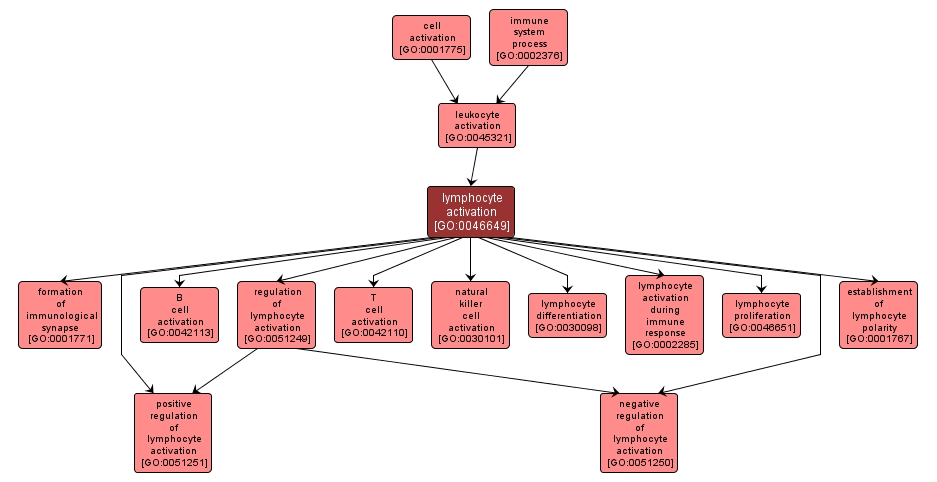GO TERM SUMMARY
|
| Name: |
lymphocyte activation |
| Acc: |
GO:0046649 |
| Aspect: |
Biological Process |
| Desc: |
A change in morphology and behavior of a lymphocyte resulting from exposure to a specific antigen, mitogen, cytokine, chemokine, cellular ligand, or soluble factor. |
|

|
INTERACTIVE GO GRAPH
|














